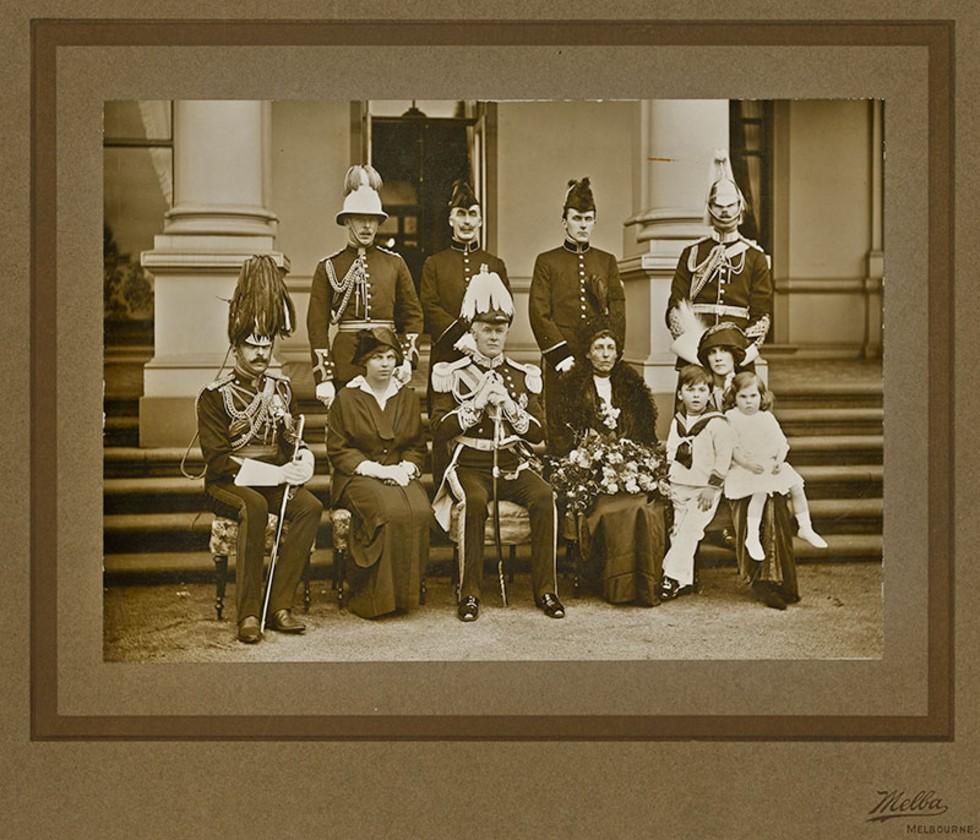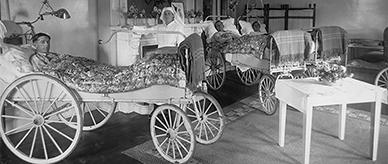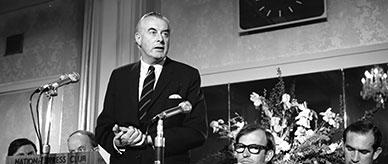


About this record
This photograph of Australian Governor-General Sir Ronald Munro Ferguson (front row, centre), Lady Munro Ferguson (to his left) and others was probably taken in 1914. The governor-general is wearing his vice-regal uniform so it is clearly a formal occasion, but the precise event and its location are unknown. The photograph comes from the collection of the personal papers of Joseph Cook, Australia’s prime minister at the outbreak of World War I.
Educational value
- Sir Ronald Munro Ferguson, an aristocrat and a polished diplomat, was the sixth Australian governor-general. Before accepting this post in February 1914, he had served in the British army and been a member of the British parliament. His term of office in Australia lasted from 18 May 1914 to 6 October 1920, during which time he worked closely with the Australian prime minister.
- In 1914 the role of the governor-general, as the British monarch’s representative in Australia, was to ensure that Britain’s imperial policies (those relating to countries who were members of the British Empire) were carried out in Australia. To achieve this role, he acted as the official channel of communication between the British and Australian governments.
- Both before and after war was declared on 4 August 1914, Governor-General Munro Ferguson held many discussions with the Australian prime minister and the other ministers about Australia’s involvement. In addition, he promoted the nation’s war effort, maintained constant communication with British and Australian generals, and inspected military camps.
- When Munro Ferguson began his term of office as governor-general, the prime minister of Australia was Joseph Cook. However, soon after Munro Ferguson’s arrival in Australia Cook requested a double dissolution of parliament, and Andrew Fisher became prime minister as a result of the federal election held in September 1914. Fisher was himself replaced as prime minister by William Morris Hughes in October 1915. In 1919 Hughes requested that Munro Ferguson extend his period as governor-general for more than a year, to cover the planned visit of the Prince of Wales Edward VIII.
- Australia is a constitutional monarchy and the governor-general is the representative of the Queen (or King) in Australia, as outlined in the Australian Constitution. The role of the governor-general includes giving assent to laws that have been passed by parliament, appointing ministers, and acting on the advice of the prime minister to open and dissolve parliament. While the governor-general is also the Commander-in-Chief of the Australian military forces, he or she acts only on the advice of ministers in this capacity.
- Pictured from front row left Captain Anstruther, Lady Doris Blackwood, His Excellency the Governor-General Sir Ronald Munro Ferguson, Lady Helen Munro Ferguson, Lady Blackwood and her two children (Ava and the future Lord Wuffeim).
Related themes
Need help with your research?
Learn how to interpret primary sources, use our collection and more.


